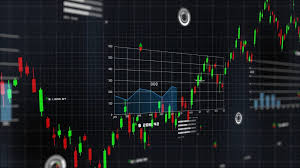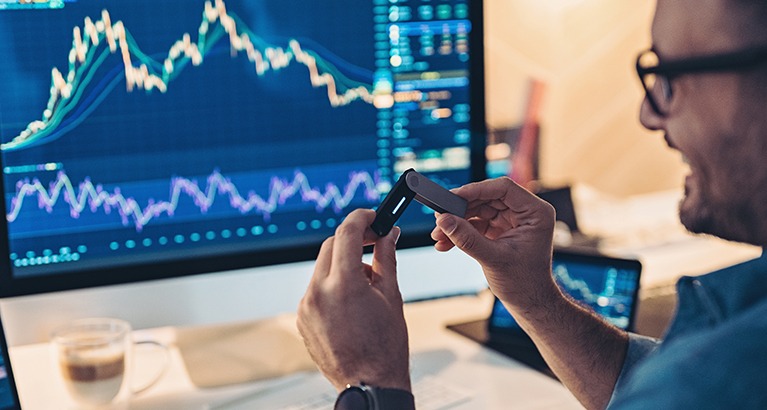
Understanding Crypto Trading Volume and Its Importance in the Market
The world of cryptocurrency trading is complex and dynamic, characterized by rapid changes and volatile markets. One of the key metrics that traders closely monitor is trading volume. Crypto Trading Volume click here to explore various tools that can help you analyze and interpret trading volume data. In this article, we will delve into what crypto trading volume is, why it matters, and how you can use it to optimize your trading strategies.
What is Crypto Trading Volume?
Crypto trading volume refers to the total quantity of a cryptocurrency that has been traded during a specific period. This parameter can be measured over different time frames—daily, weekly, monthly, or even in real-time. Trading volume provides insights into the activity level of a given cryptocurrency, reflecting how easily it can be traded without impacting its price significantly.
Why is Trading Volume Important?
Understanding trading volume is crucial for several reasons:
- Market Sentiment: High trading volume often indicates strong interest in a cryptocurrency, which can suggest bullish sentiment. Conversely, low trading volume may signal a lack of interest and potential bearish trends.
- Liquidity: A higher trading volume typically means better liquidity, allowing traders to enter and exit positions more easily without significantly affecting the price.
- Confirmation of Price Movements: Price movements accompanied by high volume are often more reliable than those with low volume, as they indicate strong conviction behind the trend.
- Volatility Indicators: Sudden spikes in volume can precede significant price changes, helping traders anticipate market movements.
How to Analyze Trading Volume
There are various methods to analyze trading volume, which can help traders make informed decisions. Here are some popular techniques:

1. Volume Charts
Most cryptocurrency exchanges provide volume charts that display the trading volume of a cryptocurrency over time. These charts help traders visualize trends and assess how volume correlates with price changes.
2. Volume Indicators
Several technical indicators incorporate volume data, including:
- On-Balance Volume (OBV): This indicator uses volume flow to predict changes in price; rising OBV suggests accumulation, while falling OBV indicates distribution.
- Accumulation/Distribution Line (A/D Line): A/D Line assesses both price and volume to determine buying and selling pressure.
- Chaikin Money Flow (CMF): This indicator combines price movement and volume to measure the buying and selling pressure for a set period.
3. Relative Volume (RVOL)
Relative Volume compares the current volume to the average volume over a specified period, helping traders identify unusual trading activity. A high RVOL indicates a significant change in trading behavior, while a low RVOL suggests stability.
Strategies Based on Trading Volume
Traders often develop strategies that incorporate trading volume as a key factor. Here are a few common approaches:
1. Breakout Trading

When a cryptocurrency breaks through resistance or support levels with high volume, it often signifies a strong trend. Traders may enter positions in the direction of the breakout, anticipating that momentum will carry the price further.
2. Volume-Weighted Average Price (VWAP)
VWAP is a trading benchmark defined as the average price a security has traded at throughout the day, based on both volume and price. It helps traders determine the trend direction over a trading day.
3. Divergence Analysis
Divergences occur when price movements do not align with volume trends. For instance, if the price rises while volume declines, it may indicate a weakening trend, prompting traders to reassess their positions.
Common Pitfalls to Avoid
While monitoring trading volume can significantly enhance trading strategies, there are also pitfalls to be aware of:
- Relying solely on volume without considering other factors, such as market news or technical indicators, can lead to skewed judgments.
- In some cases, trading volumes can be artificially inflated by wash trading, where a trader buys and sells the same asset to create misleading volume statistics.
- Focusing too much on short-term volume spikes could lead to impulsive trading decisions. It’s essential to analyze volume trends in the context of longer-term patterns.
Conclusion
Crypto trading volume is a vital statistic that can offer valuable insights into market behavior and trader sentiment. By understanding how to analyze and incorporate volume into trading strategies, traders can make more informed and strategic decisions. Whether you are a beginner or an experienced trader, recognizing the role of trading volume can enhance your trading approach and potentially lead to better outcomes. Always remember to combine volume analysis with other tools and analyses to optimize your trading performance.
